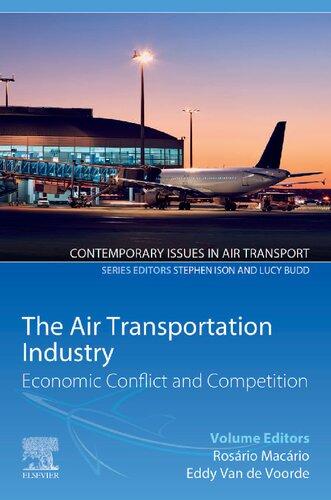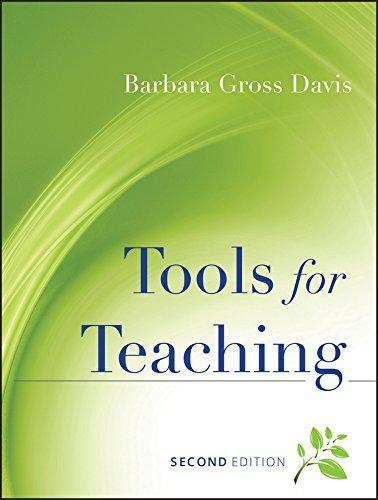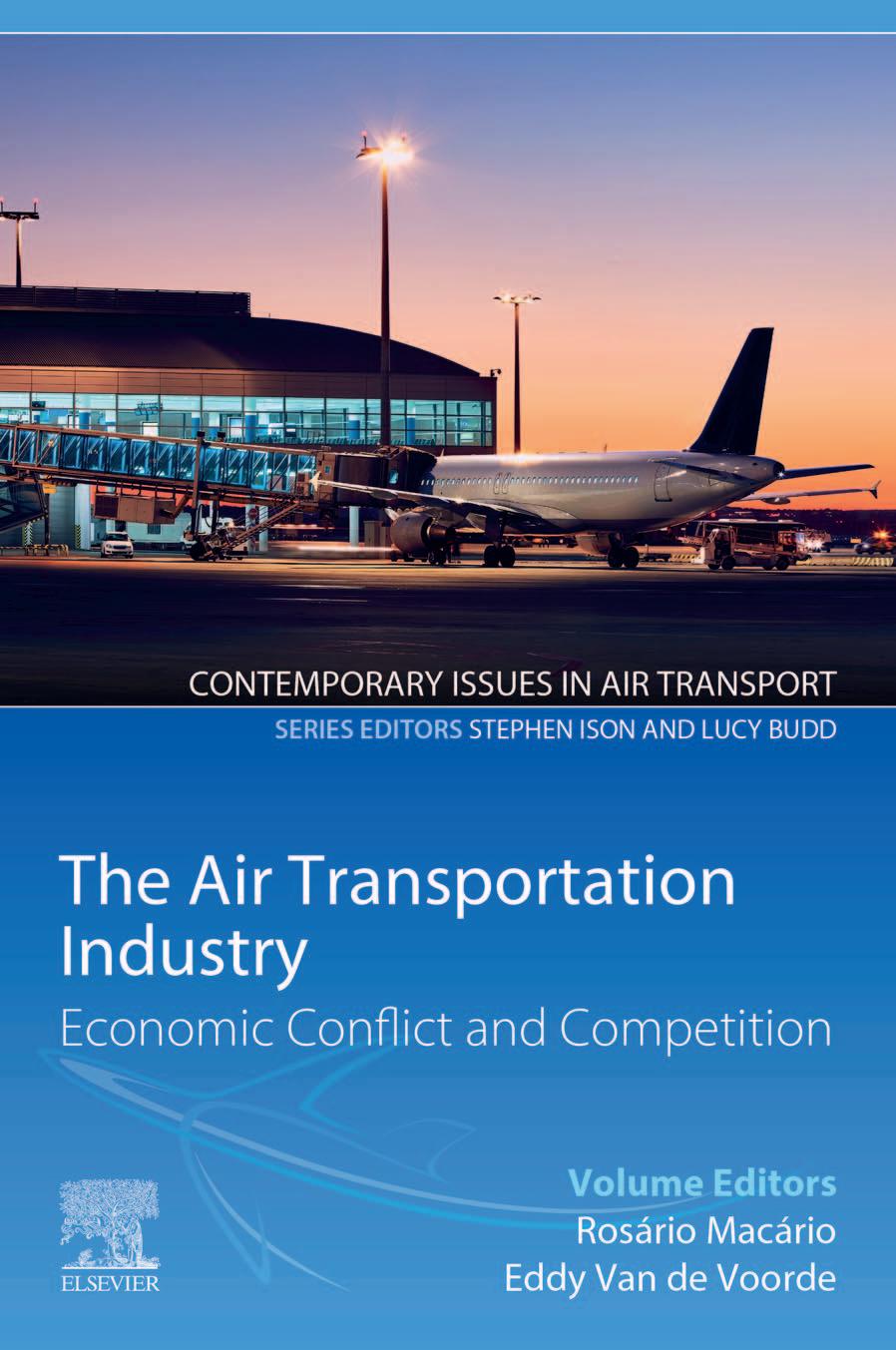https://ebookmass.com/product/the-air-transportationindustry-economic-conflict-and-competition-rosario-macario/
Instant digital products (PDF, ePub, MOBI) ready for you
Download now and discover formats that fit your needs...
The Air Transportation Industry Rosario Macario
https://ebookmass.com/product/the-air-transportation-industry-rosariomacario/
ebookmass.com
Urban Transportation and Air Pollution 1st Edition Akula Venkatram
https://ebookmass.com/product/urban-transportation-and-airpollution-1st-edition-akula-venkatram/
ebookmass.com
Air Transportation: A Management Perspective – Ebook PDF Version
https://ebookmass.com/product/air-transportation-a-managementperspective-ebook-pdf-version/
ebookmass.com
Saving People from the Harm of Death Gamlund
https://ebookmass.com/product/saving-people-from-the-harm-of-deathgamlund/
ebookmass.com
Financial Management Ashish Kumar Sana
https://ebookmass.com/product/financial-management-ashish-kumar-sana/
ebookmass.com
Tools for Teaching 2nd Edition
https://ebookmass.com/product/tools-for-teaching-2nd-edition/
ebookmass.com
Video Production: Disciplines and Techniques 12th Edition, (Ebook PDF)
https://ebookmass.com/product/video-production-disciplines-andtechniques-12th-edition-ebook-pdf/
ebookmass.com
A Cowboy Never Quits Cindi Madsen
https://ebookmass.com/product/a-cowboy-never-quits-cindi-madsen/
ebookmass.com
The Prodigal Son in English and American Literature: Five Hundred Years of Literary Homecomings Alison M. Jack
https://ebookmass.com/product/the-prodigal-son-in-english-andamerican-literature-five-hundred-years-of-literary-homecomings-alisonm-jack/
ebookmass.com
Urban
https://ebookmass.com/product/urban-climate-change-and-heat-islandsriccardo-paolini/
ebookmass.com
THEAIR TRANSPORTATION INDUSTRY
ContemporaryIssuesinAirTransport
SeriesEditors
STEPHENISON LUCYBUDD
EconomicCon
ictand Competition
Editedby ROSÁRIOMACÁRIO EDDYVANDEVOORDE
Elsevier
Radarweg29,POBox211,1000AEAmsterdam,Netherlands TheBoulevard,LangfordLane,Kidlington,OxfordOX51GB,UnitedKingdom 50HampshireStreet,5thFloor,Cambridge,MA02139,UnitedStates
Copyright © 2022ElsevierInc.Allrightsreserved.
Nopartofthispublicationmaybereproducedortransmittedinanyformorbyany means,electronicormechanical,includingphotocopying,recording,oranyinformationstorageandretrievalsystem,withoutpermissioninwritingfromthepublisher. Detailsonhowtoseekpermission,furtherinformationaboutthePublisher’spermissionspoliciesandourarrangementswithorganizationssuchastheCopyright ClearanceCenterandtheCopyrightLicensingAgency,canbefoundatourwebsite: www.elsevier.com/permissions .
Thisbookandtheindividualcontributionscontainedinitareprotectedunder copyrightbythePublisher(otherthanasmaybenotedherein).
Notices
Knowledgeandbestpracticeinthis fieldareconstantlychanging.Asnewresearch andexperiencebroadenourunderstanding,changesinresearchmethods,professional practices,ormedicaltreatmentmaybecomenecessary.
Practitionersandresearchersmustalwaysrelyontheirownexperienceandknowledge inevaluatingandusinganyinformation,methods,compounds,orexperiments describedherein.Inusingsuchinformationormethodstheyshouldbemindfulof theirownsafetyandthesafetyofothers,includingpartiesforwhomtheyhavea professionalresponsibility.
Tothefullestextentofthelaw,neitherthePublishernortheauthors,contributors,or editors,assumeanyliabilityforanyinjuryand/ordamagetopersonsorpropertyasa matterofproductsliability,negligenceorotherwise,orfromanyuseoroperationof anymethods,products,instructions,orideascontainedinthematerialherein.
LibraryofCongressCataloging-in-PublicationData
AcatalogrecordforthisbookisavailablefromtheLibraryofCongress
BritishLibraryCataloguing-in-PublicationData
AcataloguerecordforthisbookisavailablefromtheBritishLibrary
ISBN:978-0-323-91522-9
ForinformationonallElsevierpublicationsvisitourwebsite at https://www.elsevier.com/books-and-journals
Publisher: JosephHayton
AcquisitionsEditor: BrianRomer
EditorialProjectManager: MichelleFisher
ProductionProjectManager: MariaBernard
CoverDesigner: MatthewLimbert
TypesetbyTNQTechnologies
1.Economicstructureoftheairtransportbusiness1
RosárioMacárioandEddyVandeVoorde
1. Introduction1
2. Themarketstructure:highlycompetitiveandheterogeneous2
3. Evolutiontowardnewbusinessmodels15
4. Possibleconflictsituationswithinandbetweenactors18
5. Conclusions23 References24
2.TheburdenofatonCO2!Emissiontradingsystemsandthe airtransportbusiness27
ChaoukiMustapha
1. Introduction27
2. TheglobalchallengeofclimatechangeandCO2 emissions28
3. Overviewofglobalpoliciestoaddressclimatechange29
4. AirtransportindustrytrafficandCO2 emissions30
5. PoliciestoaddressCO2 emissionsfrominternationalairtransport34
6. MeasuresavailabletoreduceairtransportCO2 emissions35
7. CarbonOffsettingandReductionSchemeforInternational CivilAviation(CORSIA)39
8. AnalysisofthesupplyanddemandforcarbonoffsetsforCORSIA42
9. TheimpactofCORSIAonairtrafficandairline financialresults45
10. Conclusion52 References52 Furtherreading53
3.Laborintheaviationindustry:wages,disputes,andshocks55
HeatherMcLaughlinandColmFearon
1. Introduction55
2. Employmentintheaviationindustry56
3. Wagedetermination58
4. Monopsony(thepoweroftheemployers)59
5. Monopoly(thepoweroftheunions)61
6. Bargainingpower63
7. Industrialaction68
8. Economicshocks71
9. Conclusions73 References74
4.Theairtransportationverticalchannel,theglobalvalue added,andtheroleplayedbyprivateversuspubliccontrol77
GianmariaMartini
1. Introduction77
2. Theairtransportationverticalchannel79
3. Theaircraftmanufacturers82
4. Theenginemanufacturers84
5. Theleasingcompanies84
6. Thehandlers86
7. Thedistribution:GDSandothers88
8. Airports91
9. Airlines93 10. Conclusions94 References95
5.Exogenousshocksontheairtransportbusiness:theeffectsof aglobalemergency99
CristianaPiccioni,AndreaStolfaandAntonioMusso
1. Introduction99
2. ImpactofCOVID-19ontheairlinebusiness theworstcrisissinceever100
3. Aneweraofnationalization?112
4. Howtheindustryisgoingtofacethecrisis117
5. Conclusions121 References123 Furtherreading123
6.Theimpactofregulationontheairportindustry:theItalian case125
CarloCambiniandRaffaeleCongiu
1. Introduction125
2. Airportregulation:aliteraturereview126
3. AirportregulationinItaly129
4. Theempiricalanalysis133
5. Data137
6. Empiricalresults138
7. Conclusions145 Appendix146 References148
7.Airlinepricing,incumbents,andnewentrants151 RosárioMacárioandEddyVandeVoorde
1. Introduction151
2. Pricingprinciples:theoryandliterature152
3. Deviantbehavior:pricingasabarriertoentry161
4. Apossiblegeneralizationandalternativestrategies165
5. Conclusions167 References168 Furtherreading169
8.The fightforairportslots:thecaseofAmsterdamAirport Schiphol171
LisannevanHoutenandGuillaumeBurghouwt
1. Introduction171
2. TheEUSlotRegulation172
3. Thechangingcontextforslotallocation:COVID-19andtheairport capacitycrunch172
4. Theimplicationsforgrowingexcessdemandforslots:theoryand research findings176
5. Theimplicationsforgrowingexcessdemandforslots:thecaseof AmsterdamAirportSchiphol178
6. Conclusions187 References192
9.Differentapproachestoairportslots.Sameresults, samewinners?195
S.SeraCavusoglu
1. Introduction195
2. Airportslotallocationapproachesintheworldandtheproblems emerging196
3. Discussionofthesolutionalternativestotheproblemsemerged fromallocationapproaches200
4. Proposalofanewanduntraditionalauctionmechanismforairport slotallocation202
5. Analysisofairlineagents’ biddingbehaviorinASAM210
6. Casestudy:applicationofASAMtoasyntheticauctionmarketof HeathrowAirport215
7. DiscussionoftheproposedmodelASAMandresults220
8. Conclusions222 Acknowledgments223 References223
10.Blackswansorgrayrhinosontherunway?Theroleof uncertaintyinairportstrategicplanning225 JaapdeWit
1. Introductionandresearchquestions225
2. Increasingyear-to-yeartrafficvolatilityatairports226
3. High-impactshockeventsanddeepuncertainty233
4. Absorbingrare,high-impactshockeventsinairportstrategicplanning236
5. Finalobservationsandconclusions242 References242
11.Makingsenseofairportsecurityinsmallandmedium-sized airports247 DuarteCunha
1. Introduction247
2. Abriefhistoryofairtransportationsecurity248
3. Regulatoryframework251
4. Airtransportsecuritycosts257
5. Proportionalityofsecurityinairports258
6. Anewapproachforsecurityinanetworkofairports263
7. Conclusion269 Acknowledgments270 References270
12.Howcanairportsinfluenceairlinebehaviortoreducecarbon footprints?273 VascoReisandLauraKhammash
1. Introduction273
2. Evolutioninairtransporttrafficandimpactsworldwide274
3. Airportsenvironmentalpracticeandcarbonreductioninitiatives278
4. Challengesinenvironmentalsustainabilitypracticeatairportsandways forward281
5. Negotiation286
6. Goodpracticerecommendationsandopportunities290
7. Conclusions292 References293
13.Themeasurementofaccessibilityandconnectivityin airtransportnetworks295 AugustoVoltes-DortaandJuanCarlosMartín
1. Introduction295
2. Anoverviewofairtransportaccessibility296
3. Airtransportaccessibilityandrelatedconcepts300
4. Atentativefutureresearchagenda305
5. Conclusions310 References311
14.Fightingformarketpower:thecaseofNorwegianAirlines315 SiriP.Strandenes
1. Introduction315
2. WhydidEUderegulationinitiallynotaffecttheNorwegiandomestic airlinemarket?316
3. Phasesinairlinestrategicbehaviorfollowingthederegulation318
4. Airportcompetition324
5. Thelow-costcarrierNorwegian’scontinuedgrowthstrategy327
6. Concludingremarks330 References332
15.IsprivatizationofATCaneconomicgame-changer?Whogains andwholoses?335 SvenBuyle
1. Introduction335
2. Definitions336
3. Literaturereview337
4. TheemergenceoftheANSPbusinessmodelanditsimpacton ATM/CNSprofits345
5. Conclusions357 References358
16.Theforwarders’ powerplayeffectoncompetitioninthe aircargoindustry361 ThomasVanAsch
1. Introduction361
2. Freightforwardersinaliteraturereview362
3. Thebusinessmodeloftheairfreightforwarder364
4. Concentrationintheairfreightforwardingindustry369
5. FreightforwardersatmajorEuropeancargoairports374
6. Conclusions377 References379
17.Fuelhedging:howmanygamescanweplay?383 CarlosFilipeMarques
1. Fuelcosts’ relevanceinaviation383
2. Fuelhedgingfundamentals384
3. Hedginginreality388
4. Recentdevelopments402
5. Conclusionsandfutureoutlook404 References406
18.Theeffectofaccidentsonaircraftmanufacturers’ competition411 WouterDewulf,SilkeForbesandYufeiLi
1. Introduction411
2. Aircraftaccidents,aircraftsafety,andairlinestockprices:a literaturereview413
3. Theaircraftmanufacturersmarket:thestoryofacontinuous consolidation415
4. Aircraftaccidents:ahistoricoverviewofairtravelfromsafetosafest wayoftravel418
5. Theimpactofaccidentsonaircraftmanufacturers’ competition421
6. Whyareairlinessofaithfultotheirchosenaircraftmanufacturer?426
7. Conclusion429 References430
RosárioMacárioandEddyVandeVoorde
Thispageintentionallyleftblank
Listofcontributors
GuillaumeBurghouwt
RoyalSchipholGroup,Schiphol,Netherlands
SvenBuyle
DepartmentofTransportandRegionalEconomics,UniversityofAntwerp,Antwerp, Belgium
CarloCambini
DepartmentofManagement,PolitecnicodiTorino,Turin,Italy
S.SeraCavusoglu
CERIS,InstitutoSuperiorTécnico,DECivil,TransportationSystems,Lisboa,Portugal
RaffaeleCongiu
DepartmentofManagement,PolitecnicodiTorino,Turin,Italy
DuarteCunha
CERIS,InstitutoSuperiorTécnico-UniversidadedeLisboa,Lisbon,Portugal
JaapdeWit
EmeritusProfessor,UniversityofAmsterdam,Amsterdam,TheNetherlands
WouterDewulf
DepartmentofTransportandRegionalEconomics,UniversityofAntwerp,Antwerp, Belgium
ColmFearon
BusinessSchool,UniversityofBirmingham,Birmingham,England
SilkeForbes
DepartmentofEconomics,TuftsUniversity,Medford,MA,UnitedStates
LauraKhammash
CERIS,InstitutoSuperiorTécnico,Lisbon,Portugal
YufeiLi
DepartmentofEconomics,TuftsUniversity,Medford,MA,UnitedStates
RosárioMacário
CERIS,InstitutoSuperiorTécnico,UniversidadedeLisboa,Lisbon,Portugal; DepartmentofTransportandRegionalEconomics,UniversityofAntwerp,Antwerp, Belgium
CarlosFilipeMarques
FacultyofBusinessandEconomics,Antwerp,Belgium
GianmariaMartini
UniversitàdeglistudidiBergamo,DepartmentofEconomics,Bergamo,Italy
JuanCarlosMartín
InstituteofTourismandSustainableEconomicDevelopment,UniversityofLasPalmas deGranCanaria,LasPalmasdeGranCanaria,Spain
HeatherMcLaughlin
DeMontfortUniversity,Leicester,England
AntonioMusso
DICEA,DepartmentofCivil,Building,andEnvironmentalEngineering, “Sapienza” UniversityofRome,Rome,Italy
ChaoukiMustapha
AirTransport,ICAO,Montreal,QC,Canada
CristianaPiccioni
DICEA,DepartmentofCivil,Building,andEnvironmentalEngineering, “Sapienza” UniversityofRome,Rome,Italy
VascoReis
CERIS,InstitutoSuperiorTécnico,Lisbon,Portugal
AndreaStolfa
DICEA,DepartmentofCivil,Building,andEnvironmentalEngineering, “Sapienza” UniversityofRome,Rome,Italy
SiriP.Strandenes
DepartmentofEconomics,NorwegianSchoolofEconomics,Bergen,Norway
ThomasVanAsch
DepartmentofTransportandRegionalEconomics,UniversityofAntwerp,Antwerp, Belgium
EddyVandeVoorde
DepartmentofTransportandRegionalEconomics,UniversityofAntwerp,Antwerp, Belgium
LisannevanHouten
RoyalSchipholGroup,Schiphol,Netherlands
AugustoVoltes-Dorta
TheUniversityofEdinburghBusinessSchool,Edinburgh,UnitedKingdom
Preface
Ifafar-sightedcapitalisthadbeenpresentatKittyHawk,hewouldhavedonehis successorsahugefavorbyshootingOrvilledown.1
Theyearis2021andtheaviationindustryisintrouble.The COVID-19pandemichascreatedtremendousstressintheindustry,with aviationtraf ficslashedduetoborderclosuresandlockdownorders.
Governmentshavepumpedbillionsofdollarsintoaviationtosaveairlines frombankruptcy,protectjobs,andhelpairportssurviveacash-flowcrunch. Butthecurrentpandemicisfarfromthe firsttimetheaviationindustryhas beensavedthroughgovernmentaction.Previousrescues,although, perhaps,notquiteaswidespreadasthecurrentinitiatives,haveoccurred withregularityoverthepasthundredyears.
Recessions,pandemics,wars,andterroristincidentshaveallbroadsided theaviationindustryleadingtorequestsforregulatory fixesandgovernmentbailouts.Aviationliberalization,theopenskiesmovement,andthe privatizationofindustryplayersweresupposedtohaveledtoamarketbasedindustry,whereefficient,well-run firmssurvivedandother,less efficient firms,exitedtheindustry.Yet,thepro-cyclicalnatureofaviation, boomingduringgoodtimesandbustingduringbad,alongwiththe fixed capitalexpendituresforaircraftandairports,thehighlycyclicalpricefor fuel,andtheseeminglyrecklesscapacityexpansionsbynewandexisting airlines,maketheindustryvulnerabletocash flowcrunches.
Governmentsubsidieshavebeenafeatureoftheaviationindustrysince thebeginning,withinflatedairmailcontractsprovidingfundstokeepthe earlyairlinesafloat.Whengovernmentschosenottosubsidizeprivate sectoroperators,they,instead,investedpublicmoneytotakeownershipof airlines,airports,andairnavigationproviders.Whilegovernmentshave beenwillingtoletotherindustriesdie(notmuchapparelmanufacturedin theUnitedStatesanymore),theaviationindustryhasbeendeemedtoovital tofail.Everycountry,seemingly,musthavea flagcarrier.Airportsrequire newterminals,additionalrunways,andthelatestinpassengeramenities.
1 Quoteattributedtobillionaireinvestor,WarrenBuffett, https://nymag.com/intelligencer/ 2020/05/warren-buffett-should-have-listened-to-himself-on-airlines.html,accessedApril 25,2021.
Iftheprivatesectorisunwillingtoinvestcapitaltofundaviation,governmentsstepintoprovidefunds.Aviationinvestmentsaredeemedso importantthattheytakepriorityoverexpendituresforeducationand povertyreduction.Whyareaviationmarketssofragile?Whyhavegovernmentsbeensowillingtointerveneinthesemarkets?
Theairtransportationindustry:Economicconflictandcompetition attemptsto helpusunderstandthefunctioningofmarketsintheaviationindustry. Howdoairlinepricingstrategiesimpactcompetition?Whatistheimpactof governmentregulatorypoliciesonairlines?Howdoaviationlabormarkets function?Howshouldscarceslotsatairportsbeefficientlyallocated?How shouldrisksbeconsideredinimplementingairportsecurity?Whatisthe valueofconnectingcitiestoaviationnetworks?Istherevaluetoprivatizing airtrafficcontrol?Doesfuelhedgingpayoffforairlines?Howdoaviation accidentsimpactaircraftsales?Theseareallquestionsaddressedinthis interestinglookataviation-relatedmarkets.
TaketherecentexampleoftwofatalcrashesofBoeing737Max aircraft.Acasualobservermighthavethoughtthatthesetragicaccidents wouldhavedealtadeathblowtoBoeing’s737Max.Butthisdoesnot seemtohavebeenthecase.Althoughthereweresomeordercancellations fortheaircraft,otherairlinesdoubleddownontheirpurchases,reconfirmingordersorplacingneworders.Airlinesandleasingcompaniesplaced theseordersevenafterinvestigationsshowedmajor flawsintheprocesses Boeingemployedleadingtotheregulatoryapprovaloftheaircraft.
TheBoeing737Maxwasnotthe firstaircraftforwhichBoeing’ s developmentprocesseshavebeenshowntobelessthanadequate.For example,theBoeing787wasgroundedin2013shortlyafteritsservicewas inaugurated.Intheirinterestinganalysisof “Theeffectofaccidentson aircraftmanufacturerscompetition,” Dewulf,Forbes,andLi(Chapter18) showthat,overtheyears,accidentshaveappearedtohavehadlittleimpact onaircraftmanufacturersales.
Doesthis findingindicateamarketimperfection?Perhaps,yes.Given theduopolystructureoftheindustry,buyersmayseelittlechoicein continuingtobuyBoeingaircraft,despitethepotentialproblemswiththe purchasedaircraft.Moreover,manyairlinesareheavilyinvestedinBoeing products,especiallylow-costcarrierswithstandardizedBoeing fleets.So, switchingtoanothermanufacturerwillrequiresignificantinvestmentsin aircraftandtraining.Finally,isAirbusanybetter?Whatgoodwouldthere becuttingtieswithBoeingifanAirbus fleetissimilarlyvulnerable?
Itisnotclearhowtobest fixtheimperfectionsinthemarketforaircraft. Fixedcostsandotherbarrierstoenteringtheindustryarehigh.Perhaps, governmentinvestmentsmaybeneeded.Thisis,perhaps,whytheChinese governmenthasinvestedheavilyinthedevelopmentofaircraftthrough COMAC.ButtheChinesecouldtakeheedfromCanada’sfailedexperimentwithBombardier,sinkinghundredsofmillionsofdollarsintoan unsuccessfulbidtomaintainalocallyownedandcontrolledcommercial aircraftmanufacturer.
Otherchaptersinthebookprovideequallyinterestingexaminations ofthefunctioningofaviationmarkets.Howprivatizationmightaffect theoperationsofindustryparticipantshasbeenanalyzedextensivelyoverthe years.Researchershavecomparedtheefficiencyofprivatizedairlinestothe efficiencyofpubliclyownedairlinesandtheoperationsofprivatizedairports totheoperationsofpubliclymanagedairports.
Buyle(Chapter15)examinestheimpactofprivatizationor “commercialization” ontheoperationsofairnavigationserviceproviders.
UntiltheCOVID-19-relateddeclineinairtraffic,theairtransportnetwork hadbecomeincreasinglycrowded,contributingto flightdelays,excess flightcosts,andadditionalcarbonemissionsasaircraftcircled,waitingfor permissiontoland.Doestheprivatizationofairnavigationserviceproviders increasetheefficiencyofouraviationnetworksleadingtolowercostsfor systemusers?Unfortunately,Buyle’sanalysisdoesnotprovideapositive indicationthatprivatizationcontributestolowerusercosts,evenifefficiencyimproves.Heconcludeshischapterwiththefollowingstatement:
Overalltheprivatizationandcommercializationof[airtrafficcontrol]havenot beentheeconomicgame-changerthatgovernmentshopedfor Thewinners aretheshareholders,whoachievebetterreturnsandgenerateenoughcashflows tomakethenecessaryinvestmentsinnewtechnologiesandinfrastructure. Airspaceuserswhohadhopedforlowerairnavigationchargesoften find themselvesdisappointed.Thetotalusercostdidnotsignificantlydecrease,as reductionsincharges(iftheyexist)gohandinhandwithhigherdelaycosts.
Unfortunately,theconclusionsarehardlyaringingendorsementofthe airnavigationprivatizationeffort.
CambiniandCongiu(Chapter7)provideuswithmorepositivenews. TheauthorsexaminetheimpactofachangeinItalianregulatorypolicyon thecostsofairportoperations.In2014,followingaEuropeanUnion directive,anewlyformulated “dual-till,” price-capregulatorypolicywas
instituted,butonlyforsomeofItaly’sairports.Thenewapproachallowed airportstoshareinprofitsgeneratedbyproductivityimprovements,thus encouragingtheairportsoperatingunderthenewregulatoryformulato increaseefficiency.
Theimplementationoftheregulatorymeasureforselectairports affordedtheresearcherstheopportunitytoexaminetheimpactofthe regulatorychangeusingadifferent-in-differencemethodologicalapproach. Analyzingdatafromtwenty-twoItalianairportsovertheperiod,2008 18, theauthors findthattheimpositionoftheregulatoryapproachdidleadto lowercostsattheairports.Giventhegoalsofregulationtokeepcostsdown andimproveefficiency,CambiniandCongiuhavebeenabletouncovera successfulregulatoryintervention.
Inadditiontoexamininghowgovernmentinitiatives,suchasprivatizationandregulation,impactmarkets,chaptersinthebookalsoexamine howstrategicbehaviorcanimpactmarketoutcomes.Thebook’seditors, MacárioandVandeVoorde,contributeachapter(Chapter7)onhow airlineincumbentsusestrategicpricingbehaviorasabarriertonewentry. Whilereadingthischapter,Iwasremindedofanarticlepublishedinthe WallStreetJournal about30yearsagodescribinghowairlinesusecoded informationincomputerreservationsystemstostronglydiscouragerivals fromcompetingtoostronglyinimportantmarkets.2 Iwasalsoremindedof thedemiseofLakerAirways,apioneerlow-costcarrier,drivenfromthe NorthAtlanticmarketby fiercecompetitionfromentrenchedrivals.
MacárioandVandeVoordedescribeacasestudyofanincumbent networkairlineusingacombinationoflowpricesandincreasedcapacityto fendofftheentrybytwolow-costairlinesintheirmajormarket.The incumbentcarrierisBrusselsAirline.Vueling,aSpanish-basedcarrier,was the firstofthelow-costcarrierstoentermultipleroutesfromBrussels.Its largerrival,Ryanair,joinedthecompetitiveonslaughtwithseveralnew servicesfromthesameairport.Thedecisiontoprovideservicesfrom BrusselsrepresentedadeparturefromRyanair’straditionalstrategyof flying routesfromsecondaryairports,withadirectattackontheincumbent networkcarrierandthesmallerlow-costrivalata first-tierairport.Asa resultoftheexpansionofservicesatBrusselsairport,apricewarensued involvingthetwolow-costcarriersandBrusselsAirline.Itwasonlyafter bothVuelingandRyanairretreatedfromtheirBrusselsairportservicesthat
2 Themostfamousofthesewasthe “FU” farecode.
thepricewarended.BrusselsAirlinehadbeenabletouseitspricingand capacitystrategytosuccessfullycompetewiththelow-costcarriers, althoughataseverecosttoits finances.
vanHoutenandBurghouwt(Chapter8)alsodescribehowairlinesuse strategicbehaviortogaincompetitiveadvantage.Inthiscase,thestrategic behaviorisconcernedwithgainingaccesstoscarceslotsatcongestedairports.Slotrulesgenerallyallowairlinestomaintainslots(“grandfather” rules)iftheyarebeingactivelyused(“useitorloseit” rules).Withlimited capacityandgrowingdemandatbusyairports,onewouldexpectairlinesto increasinglyuselargeraircraftattheseairports.Moreover,loadfactorsat congestedairportsshouldriseasdemandincreases.However,intheirstudy ofcongestedSchipolAirportinAmsterdam,theauthors findthat,infact, bothaircraftsizeandloadfactorsmaybefalling.Althoughsomeofthese changesmaybeduetoairportpolicychanges(e.g.,restrictionsonwidebodiedaircraftduringcertainoperatingperiods),airlineoperatingchanges mayalsobepartiallyduetostrategicbehaviors.
vanHoutenandBurghouwtnotethatcurrentgrandfatherrulesprovide strongincentivesforairlinestodeterentrybyrivalsbyhoardingslots.In addition,airlinesmaydownsizetheiraircraftandspreadpassengertraffic overgreaterfrequenciestomaintaincontroloverscarceslots.However, newentrantscanalsousestrategicbehaviorwhencompetingforslots. EuropeanUnionrulesallownewentrantsspecialaccesstoslotsatairports. Thesenewentrantsaredefinedasairlinesthatholdfewerthan5%ofthe slotsataparticularairportor4%oftheslotsattheairportsystemlevel. Airlinescanevadetheserestrictionsby flyingundermultipleoperating authorities.Usingthisloophole,airlinescanappearasnewentrantsevenif theyhavealreadyestablishedoperationsatanairport,thusgainingaccessto airportslots.Perhaps,theEuropeanUnionshouldconsideradoptingafairer andmorerationalesystemforslotallocation,alongthelinesoutlinedby Cavusoglu(Chapter9).
AlthoughstandardEcon101stillteachesthefunctioningofperfectly competitivemarketsalongthelinesespousedbyAdamSmith,weknow fromexperiencethatmostmarketsareimperfect.Competitionisnot perfectlycompetitiveandissubjecttomanipulationbystrategicbehaviorof marketparticipants.Governmentsattempttoregulatethisbehaviorwith mixedsuccess. Theairtransportationindustry:Economicconflictandcompetition veryintelligentlydescribestheworkingsofthemanyaviation-related markets.Thechapterauthorsassesstheefficiencyofthemarketsand offerproscriptionsforwaystoimproveefficiency.
Preface
ThepauseinthegrowthofairtransportduetotheCOVID-19 pandemichasresultedinarareopportunitytoreassessthefunctioningof aviationmarkets.Hopefully,ourpolicymakersandregulatorswillmake gooduseoftheanalysespresentedinthisbook.
MartinDresner
Economicstructureoftheair transportbusiness
RosárioMacário1, 2 andEddyVandeVoorde2 1CERIS,InstitutoSuperiorTécnico,UniversidadedeLisboa,Lisbon,Portugal; 2DepartmentofTransport andRegionalEconomics,UniversityofAntwerp,Antwerp,Belgium
1.Introduction
Inrecentdecades,theaviationsectorhasprovenextremelysensitivetothe economicsituationandtherelatedcyclicaleconomicmovements.Periods ofstrongeconomicgrowthgaverisetothemarketentryofnewcarriers, expandingbusinessand,forseveralconsecutiveyears,generatingsignificant profit.Incontrast,economiccrisesautomaticallytranslateintoaviation crises,whichsubsequentlytranslateintowavesoftakeoversandmergersof companies,bankruptcies,andmarketexits.Atthesametime,theaviation sectorappearstobeaproactiveindicator:developmentsintheaviation sectorareoftenattheforefrontofevolutionsintherestoftheeconomy. Thesectorthusprovidesaneconomiclaboratoryinwhichnewdevelopmentsandtrendsbecomeindicatorsofwhatwillhappenlaterinthe globaleconomy.
Actorsintheaviationsectorapproachtheirindustryfromthe perspectiveofairtransportchains.Potentialtravelersandshippersofgoods donotselectcarriersandairportssolelyontheirowncharacteristicsand merits,butbecausetheybelongtospecificaviationchainsthatoptimally meettheirownpreferencesandcorrespondtotheirwillingnesstopayand theattractivenessofthedestinations.Theultimatesuccessofairlinesand airportsisthereforelargelydependentonwhethertheyareorarenotpart ofsuccessfulchains.
Alongwithdevelopmentsintheeconomyandindustry,however,the marketstructureandmarketforceshaveevolvedaswell(Gillenand Niemeier,2008).Atonetime,carriersatanairportcontrolledalloperations,extendingeventotourism(e.g.,hotels,travelagencies).Atonepoint, atrenddevelopedinwhichallnon-coreactivities(e.g.,catering,baggage handling)wereshiftedtowardothercompanies.Asimilarshiftoccurred inthe fieldoffreighttransport.Whilefreightwaslongconsidereda
TheAirTransportationIndustry
ISBN978-0-323-91522-9 https://doi.org/10.1016/B978-0-323-91522-9.00001-4
by-productofpassengertransport,thefreightmarketiscurrentlythe exclusivefocusofanumberofcarriers.
Theaviationmarketisthussituatedwithinanenvironmentofconstant evolutioncombinedwithpermanentuncertainty.Thedynamicsofeconomicinteractionhavemadetheaviationsectorexceptionallyresilient,as wasparticularlyevidentduringtheperiodfrom1970to2015(ICAO, 2015).Nevertheless,manyquestionsremainwithregardtothefuture. HowwillaviationrecoverfromtheCOVID-19crisisof2020?Willthis crisischallengetheairtransportindustry’scapacityforresilience?Which existingaviationactivitieswillbewilling/abletoexpand,andwhichwill disappearintheshorttomediumterm?Wherearenewmarketopportunitiesemerging?Whichexogenousandendogenousfactorsdrivechange? Theanswerstothesequestionshaveconsequencesthattranscendthe aviationsectorassuch.Anydecisionmadebyanyactorhasdirectand indirectconsequencesforavarietyofaspects,includingemployment, investments,theaddedvaluetoberealizedandtheprevailingfunding requirements.Fromanotherperspective,increasinguncertaintycausedby pandemicsislikelytoincreasetheriskassociatedwithinvestments,thereby affectingtheexpansionandmanagementofairports.
Asdemonstratedbythesedevelopmentsdescribed,thereisaneedto identifyanynewdevelopmentsintheaviationsectorasquicklyaspossible andtobeabletoestimatetheirconsequences.Onlythenwillthevarious actorsinvolvedbeabletotaketheproperaction.Inaddition,theactors withinthesystemcompete,negotiate,andevencomeintoconflictwith eachother.Therelativepowerrelationsbetweenaviationactorsarediscussedinthischapter,aswellasthroughoutthebook.Inthischapter,the discussionofpowerrelationisfollowedbyfurtherdetailsontheevolution towardnewbusinessmodelsandpossibleconflictsbetweenaviationactors.
2.Themarketstructure:highlycompetitiveand heterogeneous
Overtheyears,theaviationsectorhasundergonearelativelyrapidevolutiontowardnewmarketforms.Thesectorinitiallyfacedpressuretoshift fromhighlyregulatedmarketstowardliberalized,deregulatedmarkets (Odoni,2016a; Gudmundsson,2019).Oneconsequenceofthisshiftwas thatitmadeitrelativelyeasyfornewcomerstoenterthemarket,while increasingcompetitionforthetraditional “flagcarriers.” Thishasgivenrise tostrong,rapiddevelopmentwithintheaviationmarket,characterizedby continuousentriesandexits(see,e.g., Green,2016).
Airlineshavealsoincreasinglymovedawayfromthenotionthatthey mustcontroltheentireaviationproduct.Oneprominentnewtrendhas involvedfocusingonthe “corebusiness” actual flightoperations and phasingoutall “non-coreactivities.” Thistrendhasresultedinchangesto thecompositionoftheaviationproduct(i.e.,movementfromoriginto destination)anditsspecificcharacteristics(e.g.,price,comfort,frequency, timing).The fieldhasincreasinglycometoinvolveacombinationofseveral differentmarketactors,fromcarriersandairportmanagerstoallkindsof serviceproviders,andthechangesapplytobothpassengerandfreight transport.Theinteractionbetweenthestrategiesofthevariousactorsis abundantlyclear.Theadvanceofchainthinkingmeansacknowledgingthat everydecisionthatanindividualactormakeswillhavebothdirectand indirectconsequencesfortheotheractorswithinthechain,withimplicationsforthecompetitivepositionsofallactorsinvolved(Starkie,2008).
2.1Themarketstructure
Althoughthestructureofamarketmayevolveovertime,thebasiceconomicrulesremainthesame.Forexample,theaviationindustrycontinues tobedrivenmainlybytheglobaleconomy.Thisworldeconomyissubject torapidchangesininternationaltrade,theinternationalredistributionof laborandcapital,andthefar-reachingintegrationandglobalizationof markets(see,e.g., Kupferetal.,2017).
Thecoreofanaviationchaininitiallyconsistedofairlinesandairports (Merkertetal.,2017),anditwouldseemobvioustoregardairlinesasthe largestandstrategicallymostimportantairportcustomers.Overtime,airlineshaveundergoneasignificantincreaseinscale,largelyduetohorizontal cooperation(cf.thethreemajoralliances)and/ormergersandacquisitions (cf.Lufthansa’scontroloverotherairlines,includingSwissInternational Airlines,AustrianAirlines,andBrusselsAirlines).
Oneimportantquestionconcernswhetherthetrendtowardscaleincreasesamongthecarrierscanalsobeexpectedamongairportoperatorsand theprovidersofvariousservices,includinghandling,catering,cleaning,and hinterlandtransport(Morrisonetal.,2008).Theconstantchangestaking placewithintheairportsectorhavecontinuedinrecentdecades.The field ofairportmanagementandoperationshasundergoneanevolutionfrom government-ledmanagementtowardtheincreasingcontributionofprivate capital,insomecasesaccompaniedbyinterestsinothertransportmodes (e.g.,capitalinvestmentsbyVINCIAirportsintheairportsofPortugal). Traditionalgroundhandlingcompaniesareshiftingintomorecomplex
handlingholdings,withaprocessofmergersandacquisitionsinitiated underpressurefromtheneedforcapital,combinedwithexternallyfunded expansionprojects.
Aschainthinkinghasincreased,transportservicesfromoriginto destinationhavecometobeconsideredintermsofcomplexlogistics chains,witheachlinkexpectedtocontributetoaprocessofcontinuous optimizationthroughoutthechainasawhole.Inresponsetothedetection ofpotentialbottlenecks,carriersarelikelytomovetowardverticalacquisitionsandverticalintegration.Suchshiftsaffectthecompetitivebalance, withspecificcarriersacquiringgreatermarketpowerasthelargestandmost activelygrowingactorsatspecificairports.
Estimatingthefuturemarketstructurerequiresinsightintoanumberof possiblefuturedevelopments(Belobaba,2016)Perhapsthemostimportant questionsconcernfutureeconomicgrowth.Anyeconomicgrowththat mighttakeplacewillalmostautomaticallytranslateintoagrowingdemand forairportservicesacrossthechain.BeforetheCOVID-19pandemic,the onlyquestioninaviationcirclesconcernedtheextenttowhichlong-term economicgrowthwouldcontinueandwhetherandtowhatextent potentialshort-termcriseswerelikelytocausestructuralshifts.The pandemicwillinevitablyresultinchangestoseveralprocessesinoursociety.Forexample,teleworkingwillundoubtedlybemuchmorecommon, potentiallyresultinginasignificantreductionofbusinesstrips.Thisraises severalimportantquestions.Inthefuture,willthedemandforairtransport followapathofgrowththatdependsonservicesratherthanonindustrial output?Willgrowthinpassenger/freighttransportcontinuetoberelatedto GDP?Willthetrendtowardscaling-upcarriersandserviceproviders throughhorizontalandverticalformsofintegrationcontinue?Giventhe apparentendtothetrendtowardever-largerdevices(cf.theA380story), whichdevicesarelikelytobeusedinthefuture?
Evenmoreimportantthanestimatingthefuturestructureofthemarket istheanalysisofthestrategicstepsofthecarriers,astheyaretheinitiatorsof connectionsandthefrequencyandcapacityonoffer(Kupferetal.,2016). Importantquestionsariseinthisregardaswell.Whichtimeframeswill thosecarriersfollowintheirsearchfornewpartnerships?Howwillthe non-carrierswithinthattransportchainrespondtothis?Towhatextent willthecarriersbecomesopowerfulthattheyareabletoimposetheirwill onotheractors(e.g.,airportauthoritiesandgroundhandlingcompanies)? Willtheaviationsectorenterintonewpartnershipswithothermodesof transport(cf.politicalpressuretoabolishshortaviationconnections)?
Eachofthecrucialquestionspresentedaboveissurroundedbyuncertainty.Thisispartlyduetothefactthattheaviationmarketisahighly
dynamicenvironment.Itisthusreasonabletoassumethatthevariousactors trytoanticipateeachother’sstrategicdecisions.Thisiscompetitioninits purestform.
PriortotheCOVID-19pandemic,themostlikelyfuturescenarios deservingofin-depthscientificinvestigationwerelargelyknown.Onlythe concretetimelineremaineduncertain.Althoughthepandemicclearly changedthissituation,itisnottheonlyfactorinvolved.Thespeedwith whichthevariousmarketactorswithintheaviationchainwillimplement theiradaptedstrategieswillalsodependonawiderangeofexogenousand endogenousvariables(seee.g., Bringmanetal.,2018).
2.2Sizeorderofmarketparties:turnover,money,andpower
Toprovideanideaoftherelativemarketpowerofthevariousaviation actors,weinitiallylimitourfocustoananalysisofaggregated figuresfor carriersandairports.Inasubsequentsection,weexaminethemutualties betweenactors.
Table1.1 providesanoverviewoftheorderofmagnitudeofthe scheduledpassengerandcargotrafficfortheworldasawhole,which involved4.5billionpassengersand60.9milliontonsin2019.Itisinterestingtonotethat58.6%ofallpassengertransportwasdomestic,with 41.4%international.Airlinesthusintroduced4.5billioncustomersintothe aviationsystem.These figurescanbeusedtoderivetheeffectsforairports andairport-dependentactors.
Table1.1 Worldwidescheduledpassengerandcargotraffic(2019).
WorldInternationalDomesticSystem-wide
Passengerscarried(thousands)1,890,5942,652,5004,543,094
Freighttonnescarried(thousands)40,91920,04560,965
Passenger-kilometres flown (millions) 5,548,8193,130,8028,679,621
Availableseat-kilometres(millions)6,766,5223,752,65210,519,174
Passengerloadfactor82.0%83.4%82.5%
Freightandmailtonne-kilometres (millions) 220,68933,293253,982
Availablefreighttonne-kilometres (millions) 423,906119,910543,717
Freightloadfactor52.1%27.8%46.6%
Revenuetonne-kilometres (millions) 750,097318,4131,068,510
Availabletonne-kilometres (millions) 1,071,337465,9371,537,274
Weightloadfactor70.0%68.3%69.5%
Source: ReproducedfromIATA,2000 2020.WorldAirTransportStatistics(WATS),Montreal.













